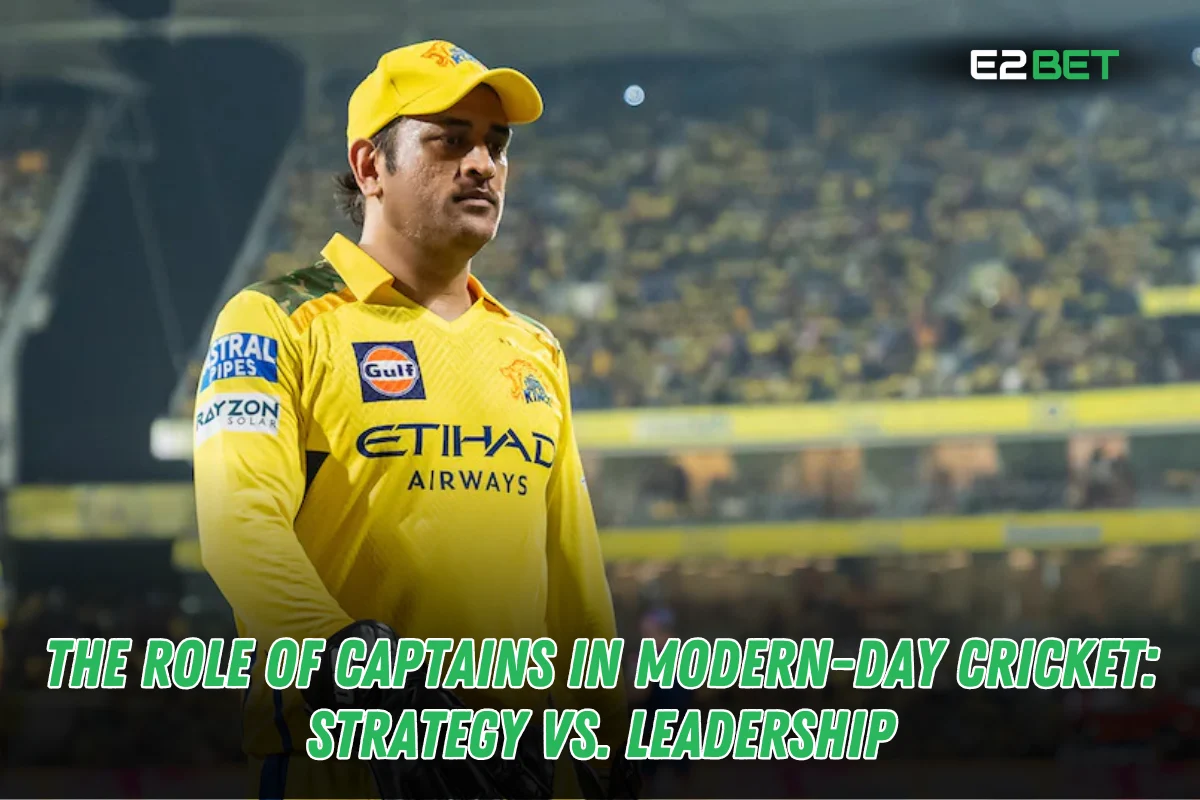Cricket is more than just a game of bat and ball; it’s a battle of minds. A cricket captain’s role goes beyond just tossing a coin at the start of a match. They are responsible for match-winning captaincy strategies, team morale, and handling high-pressure situations.
In modern cricket, a captain must balance strategic thinking in cricket with leadership. While strategy involves field placements, bowling changes, and DRS decisions, leadership focuses on motivating players, handling media pressure, and maintaining team unity.
The Evolution of Cricket Captaincy
The role of a cricket captain has changed significantly over time. In the past, captains primarily focused on setting fields and selecting bowlers. However, modern cricket, especially with the rise of T20 leagues like IPL, has transformed captaincy into a complex task that requires both cricket leadership qualities and tactical decision-making.
Key Responsibilities of a Cricket Captain
On-Field Responsibilities
A captain’s on-field responsibilities define the outcome of the match. Some crucial decisions include:
- Field placements and bowling strategies based on opposition weaknesses
- Making quick decision-making in T20 cricket
- Handling pressure situations in ODIs and Test matches

Off-Field Responsibilities
Apart from match strategies, captains must:
- Work closely with coaches and team analysts
- Handle team leadership psychology
- Manage media interactions and public relations
Famous Captains and Their Leadership Styles
MS Dhoni – The Cool Strategist
MS Dhoni is regarded as one of the best cricket captains in history due to his ability to remain calm under pressure. His decision-making strategies and leadership in high-pressure situations made India a dominant force in ODI and T20 cricket.
Virat Kohli – Aggressive Leadership
Kohli’s aggressive approach changed cricket captaincy strategies in India. His leadership mindset in sports and emphasis on fitness and aggression influenced the team’s playing style.
Eoin Morgan – Tactical Innovator
Morgan’s ODI captaincy strategy played a key role in England’s white-ball revolution. His data-driven leadership approach changed how captains plan matches.
Kane Williamson – Calm and Composed
Williamson’s leadership in Test cricket showcases patience, discipline, and tactical brilliance. His captaincy impact on cricket teams is evident in New Zealand’s consistent performances.
Balancing Strategy and Leadership in Cricket Captaincy
A great captain knows when to focus on strategy in modern cricket and when to prioritize team leadership psychology. Some situations require aggressive field placements, while others demand inspiring speeches to motivate players.
For instance, in Test cricket, captains must be patient and persistent, whereas in T20 matches, quick decision-making is crucial. The ability to shift between tactical planning and leadership qualities is what defines a successful cricket captain.
The Impact of Data and Technology on Captaincy
Modern captains rely heavily on data analytics in cricket to make better decisions. Tools like Hawk-Eye, heat maps, and performance analysis software help captains strategize against opposition teams.
With the rise of T20 cricket leagues like IPL, captains now have access to detailed reports on player performance, making strategic planning in cricket more analytical than ever.
Challenges Faced by Modern Cricket Captains
Being a captain is not just about leading a cricket team; it comes with numerous challenges:
- Managing different personalities in a team
- Handling social media and media pressure
- Coping with bio-bubble fatigue and mental health concerns
In franchise cricket, captains also need to balance international and IPL captaincy styles while maintaining consistency in performance.
Captains vs. Coaches: Who Holds More Power?
There has always been a debate about cricket coaching vs. captaincy role. While a coach provides guidance, it is the captain who makes the real-time decisions on the field. A strong captain-coach partnership, like Ricky Ponting and John Buchanan, is essential for success.
How Future Captains Can Improve Their Leadership
Upcoming captains can improve by:
- Learning from past legends like Dhoni, Ponting, and Williamson
- Adapting to modern cricket strategies and analytics
- Developing mental toughness and team leadership skills
Conclusion
A cricket captain’s role is one of the most demanding positions in the sport. It requires a perfect mix of strategy, leadership, and adaptability. While tactics win matches, leadership builds teams that dominate for years. As cricket continues to evolve, the balance between captaincy strategies and leadership qualities will shape the future of the game.
FAQs
Q1. What makes a great cricket captain?
Ans. A great cricket captain has strong leadership skills, tactical awareness, and the ability to handle pressure in high-stakes matches.
Q2. Who is the most successful cricket captain in history?
Ans. Captains like MS Dhoni, Ricky Ponting, and Clive Lloyd are among the most successful due to their match-winning captaincy strategies.
Q3. How does a captain influence team performance?
Ans. A cricket captain’s leadership impacts the team’s morale, strategy, and execution on the field, often determining the outcome of crucial matches.
Q4. Can a great player be a poor captain?
Ans. Yes, some great players struggle with captaincy because leadership in sports requires more than just personal performance—it demands team management and decision-making skills.
Q5. What challenges do captains face in T20 cricket?
Ans. Captains in T20 cricket must make quick tactical decisions, handle pressure, and balance aggressive gameplay with smart strategies.